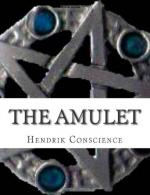“‘Simon, this is the hour for repentance!’
“And Simon, as long as he could speak, replied:
“‘Yes, father.’”
* * * * *
Simon Turchi evinced great repentance and much patience, and he accepted with resignation the painful and infamous death to which he was condemned. When it was certain that he was dead, his body, partially consumed, was conveyed outside the city gates and attached to a stake by an iron chain. The dagger with which he had stabbed Geronimo was thrust into his side. The stake was so placed on the public road that it could be seen by all who passed, in order that the punishment inflicted for murder might serve as a warning to others, and prevent the commission of infamous crimes.
THE END.
ENDNOTES
[Footnote 1: “All the foreign merchants who resided at Bruges, with the exception of a few Spaniards, established themselves here about the year 1516, to the great disadvantage of Bruges and to the advantage of Antwerp.”—Le Guicciardini, Description of the Low Countries. Arnhem, 1617, p. 113.]
[Footnote 2: C. Schibanius, in his Origines Antwerpien Sum, says that he has often seen in the Scheldt twenty-five hundred vessels, many of which were detained at anchor for two or three weeks before being able to approach the wharf.]
[Footnote 3: The stables, and coach-houses used by this company for transportation still exist at Antwerp. Although they are now occupied as barracks, they preserve their original name—Hessenhaus.]
[Footnote 4: See the statistics of population given by Schibanius in the History of Antwerp, by Mertens & Torfo, Part IV., ch. v.]
[Footnote 5: The inhabitants of Antwerp are experienced and skilled in commercial affairs, and although they may not have left their own country the greater part of them, even the women, can speak four, five, and sometimes seven different languages.]
[Footnote 6: “The nobles of Netherlands do not engage in commerce like the Italian noblemen from Venice, Florence, Genoa, and Lucca.”—L. Guiccardini, Description of the Low Countries, p. 140.]
[Footnote 7: “Two well-known Italian merchants, both of noble birth, natives of Lucca, who were great friends.” Van Mertens, History of the Low Countries, Vol. I.]
[Footnote 8: The bailiff (schoat) was the representative of the prince in the prosecution of crimes. He alone, and his agents by his orders, could make arrests, except in cases of flagrant crime or of persons lying in wait. This high functionary was also called the margrave, because the margrave of the Low Countries was, in virtue of that office, the bailiff of the city of Antwerp.]
[Footnote 9: “It is estimated that three thousand new houses were either erected by himself, or by others through his assistance.”—Mertens & Torfo, History of Antwerp.]




